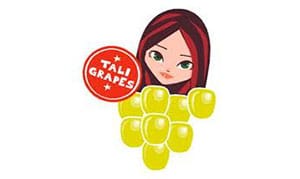The Importance of Fruit Quality Control & Testing for Grapes
There are more than 10,000 types of grapes, and while 1,300 of them are grown primarily for wine, the rest are destined to become table grapes. But they all have one thing in common. Whether your crop is on its way to becoming a bottle of wine, a box of raisins, or going to be eaten by a happy consumer, quality control is essential to making this happen.
Optimizing table grape quality evaluation has become more important than ever as everyone from growers and pickers, to warehouses, marketing companies and retailers are looking to reduce waste and increase profitability across the board.
Without creating a consistent table grapes quality control measurement or fruit quality control process for when grape picking season or grape harvest season comes around, these businesses are unable to reassure their buyers that they are paying a fair price, and are stuck negotiating or haggling as they attempt to make ends meet.
Common Grape Defects
The following defects are the ones that are most likely to affect grape quality across the supply chain and effect quality parameters:
Undersized/Oversized
Many farmers go to great lengths to get their grapes big and juicy! But while small grapes could be lacking in color or sweetness, oversized grapes may mean that they’ve been overwatered or that too many chemicals have been used. In addition, oversized grapes may have lower BRIX concentration and a sour taste.
Color Defects
Grapes can be green, red, yellow, purple, and pink! But a low color could indicate too much potassium or nitrogen, or could be the result of an imbalance in irrigation.
Russet
You’ll be able to recognize this problem by the distinctive rust-like colored stripes on your fruit. Also, in addition to russeting being non-appetizing, it can also affect grape quality control as it may be a sign of problematic environmental conditions or the result of mechanical damage.
Deformation/Shape Defects
There can be many reasons why a grape might have lost its plump or round shape, including pests (mite feeding damage), nutritional deficiencies, or toxicities.
Sunburn
Sunburned grapes can have a higher risk of browning or tasting bitter. In red grapes, sunburn is associated with decreased anthocyanin levels.
Stains
It’s not always easy to tell what causes stains on grapes with the naked eye. It could be the beginning of something more serious such as rot or fungus, or it could be caused by slight sunburn or russet. For this reason, in the case of stains, further grape testing should be done.
Pests
Birds, worms, or fungal damage is not uncommon in grape plants. Two examples are powdery mildew and sooty mold, both of which look like they sound! If left to spread, these are dangerous for grape safety, and could quickly destroy a grape harvest or yield.
Insect Damage
One of the most common forms of insect damage on grape crops is the mealy bug. This can come in the form of cottony egg clusters, eggs, or adults, and in some cases is a sign of the grapevine leaf roll virus. Other common forms of insect damage are caused by beetles and moths, and some of these are endemic.
Skin Defects
Technology helps to determine what causes grape defects on the skin of a grape. Anything from cracks and scars, to discoloration or insect damage. How can you know what you’re risking?
Bruising
Fresh fruit is always going to be very susceptible to bruising, and grapes are no different. Bruising could happen at any stage of the value chain, and the visible impact doesn’t always show up right away.
Lenticel
These appear as small, freckle-like dots. While they don’t impact grape safety, some people may consider them a defect because they affect the appearance of the grapes.
Split Berries
A split in a grape can happen when there is excess water. The cells inside the fruit expand to suit, however the skin of the grape is only elastic to some degree. This can happen naturally through rainfall, or as a result of excess irrigation.
Watery
Heavy pruning or a sparse grapevine can be two of the reasons why you might get watery grapes. Sometimes, if grapes are leaking water, they might appear cloudy or even mucus-like.
Open Wounds
Can develop during the growth process or as a result of mishandling during grape harvesting or grape picking. This can then cause problems such as water loss or pest infections like black mold.
Decay/Rot
Fungi can attack the fruit in various stages. This may develop, even after harvest, into decay. Sanitation treatments like fungicides can be helpful.
Shatter
This occurs when berries fall from the stem (also known as dry fall). This can be caused from rough handling of the stem or tissue crush of the pedicel that leads to water loss and oxidation. Shatter can also be climatic and result from a lack of water or inner sugar migrating problems. Pollination-derived shatter can occur when the cluster’s berries fall before they have time to grow, or when the flowers of the grapevine are not pollinated properly.
Brown Berries
Grapes can have a wide range of colors, but when your fruit starts to grow brown, it makes it less appealing for customers and can impact your price and profit. For this reason, it’s important to understand why your berries are brown ahead of time.
Scars
Scars can come from a variety of sources such as spray damage or mechanical damage. During scarring, berries can end up with tears, which are invitations for other rot and fungi, which can then easily spread throughout your crop.
Softness
Overripe grapes will cause the fruit to be soft to the touch, or to develop mushy spots. On the vine, this means that grape picking was not done in a timely fashion, or that the fruit were not given sufficient nutrients.
Mold
Mold is a common example of grape defects. One of the most likely examples is grey mold of grape, which looks exactly like it sounds and can quickly destroy a grape harvest.
Cracks
Cracks can come from a wide variety of sources, whether it’s pests like powdery mildew or insects, or over- or under-irrigation. Once cracks appear, this can also invite additional problems.
Interesting Facts about Grapes
- Europe is the largest grape producing region in the world, accounting for 45% of the global production of grapes.
- The five biggest exporters of grapes are Chile, Italy, United States, South Africa, and Peru.
- The US mainly imports grapes from Chile, Mexico, and Peru (together this accounts for 99% of the US grape import).
Common Grape Attributes for Grape Quality Evaluation
The following internal and external grapes attributes are commonly used for quality evaluation:
Color
Diameter
Degrees Brix
Stem color
Firmness
For the full list of attributes that the Clarifruit platform currently evaluates and recommended quality standards for each, download our free app now.
The Clarifruit platform also integrates with 3rd-party technology to evaluate external grape attributes. Learn more here
Read our blog post about how your grape QC is connected to where your buyers live.
Grape Growing Seasons in the Northern and Southern Hemispheres
| HEMISPHERE | Jan | Feb | Mar | Apr | May | Jun | Jul | Aug | Sep | Oct | Nov | Dec |
|---|---|---|---|---|---|---|---|---|---|---|---|---|
| Northern | ||||||||||||
| Southern |
Scroll left to see the growing seasons table















